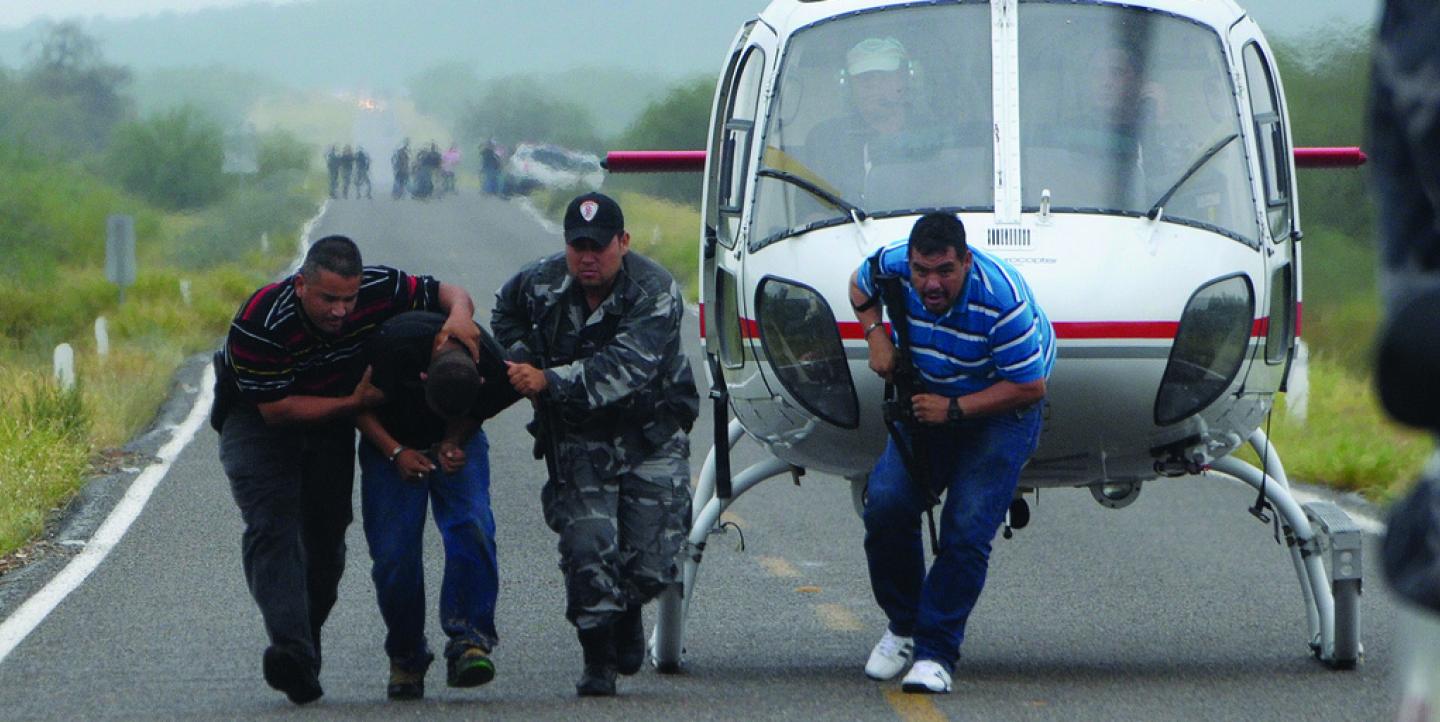Enrique Juarez Torres, editorial director of El Mañana de Matamoros, a newspaper based in Matamoros, a border city controlled by the Gulf Cartel, knows very well what a “zone of silence” means. A group of drug traffickers kidnapped him on February 4, 2015.
“We are going to kill you,” the kidnappers said to Juarez, targeting him for covering a wave of violence taking place in the city.
Juarez was freed the same day, but he found the newsroom empty. Most of the reporters, editors and administrative personnel quit their jobs and left the newspaper. Now Juarez and his family are living in the U.S. He is working remotely.
Self-censorship is commonly seen as a way journalists surrender freedom of expression, but this issue can be seen in a different light from dangerous zones in Latin America. Via murders, death threats and forced disappearances, criminal organizations and corrupt officials are creating zones of silence, where journalists face a big dilemma: risk their lives producing crime and corruption stories or censor themselves to stay alive.
In addition to imposing silence, criminals sometimes take the extra step of forcing reporters to run stories in the criminals’ interest. Drug cartels started making reporters submit certain photos and stories to their newsrooms back in 2004, when Nuevo Laredo, a city located at the US-Mexico border, became the battlefield in a fight between the Sinaloa and Zetas cartels. The editor of El Mañana de Nuevo Laredo, a major local newspaper, discovered that one of his reporters was being pressured by one criminal organization to post photos of executed members of the rival group. Since then, this trend of criminals forcing reporters to publish information has become a common practice in Mexico.
But silence in those zones is not absolute. There is a permanent tension between forces suppressing freedom of expression and courageous reporters and editors accepting the risk to continue their work as independent journalists.
Journalists are constantly adapting to meet these challenging conditions. In some cases, media organizations stopped adding bylines on stories involving drug-related violence. The reporter’s anonymity may provide minimal security. However, it can be a weak measure in small cities, where it is well known who covers the police beat.
In other cases, newspaper chains cover drug trafficking stories taking place in one city and publish them in another, far away from control of the criminals and corrupt officials being covered.
Some media organizations have experienced cases where reporters and editors are in conflict. The worst-case scenario is having a criminal organization pressuring a reporter to run a story while a rival criminal group is forcing the editor to discard the same story.
Data-driven analysis
We need to use mapping technology to analyze this problem, realize how widespread the high-risk areas are in our regions and identify trends and patterns of aggression to journalists. A geographical analysis of 118 cases of murders and forced disappearances of journalists in Mexico between 2005 and 2015 shows high-risk areas in 71 municipalities in 20 Mexican states.
In the following visualization using data from Periodistas en Riesgo, the map that I created as a Knight Fellow in 2012, we can see the growing trend of high-risk areas for journalists in Mexico over the last two years.
In the past two years, the map Periodistas en Riesgo has tracked 19 attacks with heavy weapons and explosives to newspapers, TV stations, radio stations and printed magazines in Mexico. Most of those organizations keep working to inform audiences in spite of the violent pressure.
In all those municipalities and states, the level of violence related to drug trafficking and organized crime is very high, but coverage of drug-related incidents is low. An investigation in the border state of Nuevo Leon, conducted by the MEPI Foundation in 2013, shows that only nine percent of 1,600 crime stories were about drug trafficking. Only 55 percent of the reporters included their byline.
Risk reduction
Here is some advice for journalists working in high-risk areas, facing forces trying to impose silence and suppress freedom of expression:
1. Reporters and editors need to work together. Editors need to understand the context and the fast-moving environment, and reporters must follow security protocols.
2. Journalists need to create trusted networks to stay abreast of security incidents and help any reporter in trouble in those areas. Communication between them should be encrypted. You can find some encrypting tools here.
3. Use journalists’ mobile security applications. You can see the following list:
- Reporta will allow the user to check in when operating in dangerous environments and send an SOS alert in imminent risk.
- Hancel is a cell phone application for Android that allows journalists to report aggressions as they happen and to program automatic alerts in case of an incident. Journalists can select which personal contacts and free speech organizations will receive their alerts and in doing so create a network that allows for a more immediate and coordinated response.
- Panic Button allows the user to send an emergency SMS to three trusted contacts in an emergency. It attaches a map link with location coordinates when GPS is enabled. It also protects app data with disguise screen and PIN number, and it provides tips on security for safer use.
4. When possible, create a special unit to cover corruption and organized crime and analyze the origin and motivation of any related story before publishing.
5. Encrypt, encrypt, encrypt. It is very important to learn how to encrypt data and files of your investigations, communications and files. You can see some tutorials here.
Jorge Luis Sierra is an award-winning Mexican investigative reporter and editor and an expert in digital security. Learn more about his work as an ICFJ Knight Fellow here.
Main image CC-licensed by Flickr via Knight Foundation.

